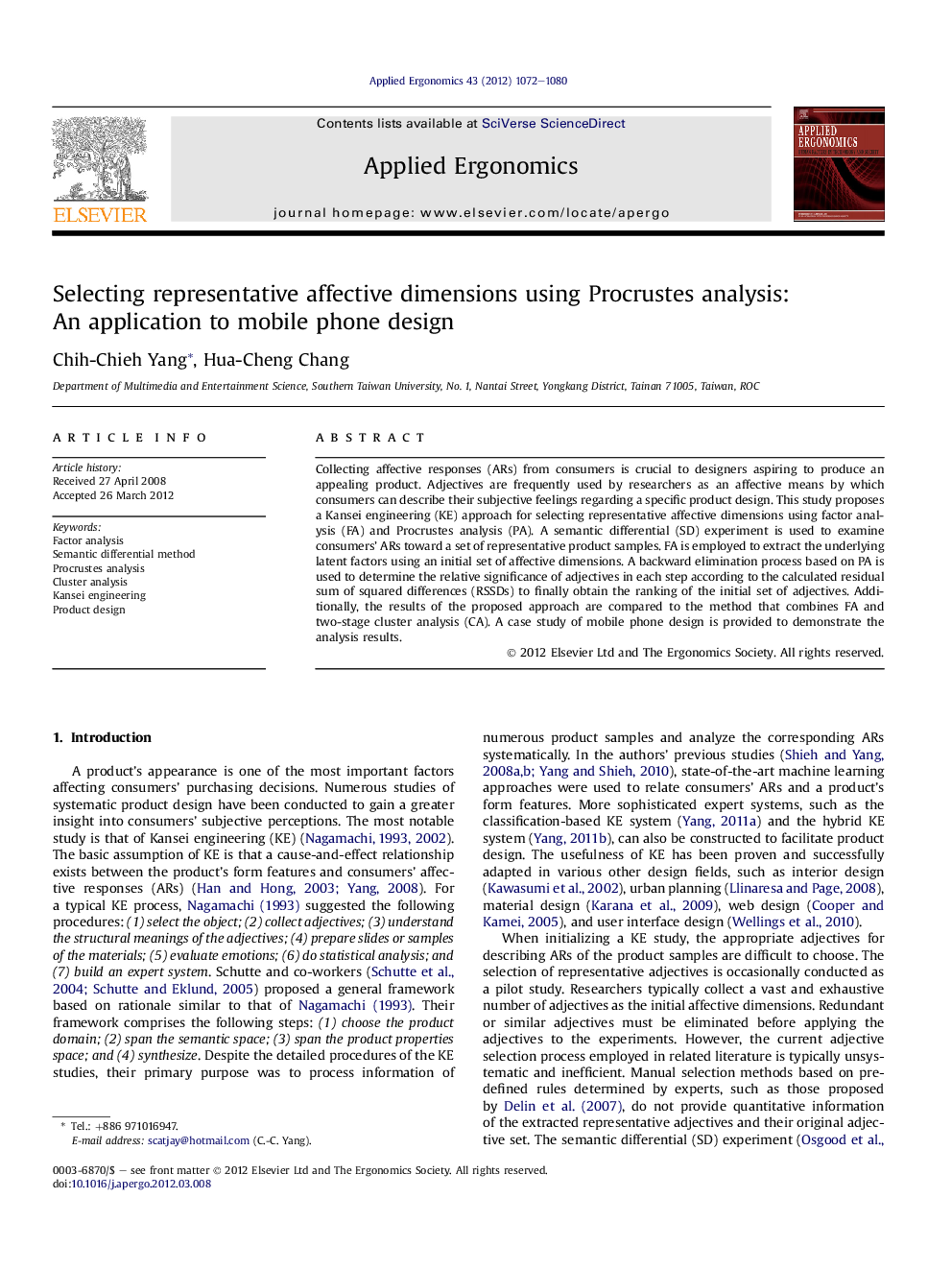| Article ID | Journal | Published Year | Pages | File Type |
|---|---|---|---|---|
| 548504 | Applied Ergonomics | 2012 | 9 Pages |
Collecting affective responses (ARs) from consumers is crucial to designers aspiring to produce an appealing product. Adjectives are frequently used by researchers as an affective means by which consumers can describe their subjective feelings regarding a specific product design. This study proposes a Kansei engineering (KE) approach for selecting representative affective dimensions using factor analysis (FA) and Procrustes analysis (PA). A semantic differential (SD) experiment is used to examine consumers’ ARs toward a set of representative product samples. FA is employed to extract the underlying latent factors using an initial set of affective dimensions. A backward elimination process based on PA is used to determine the relative significance of adjectives in each step according to the calculated residual sum of squared differences (RSSDs) to finally obtain the ranking of the initial set of adjectives. Additionally, the results of the proposed approach are compared to the method that combines FA and two-stage cluster analysis (CA). A case study of mobile phone design is provided to demonstrate the analysis results.
► An approach for selecting representative affective dimensions was proposed. ► The approach integrates factor analysis and Procrustes analysis. ► A semantic differential was used to examine consumers’ affective responses. ► The results of Procrustes analysis and two-stage cluster analysis were compared.
